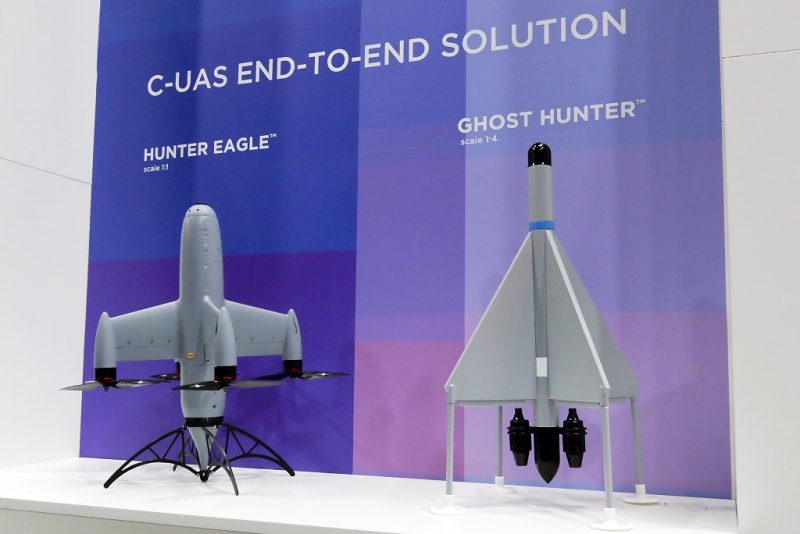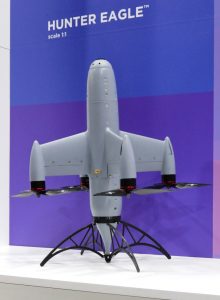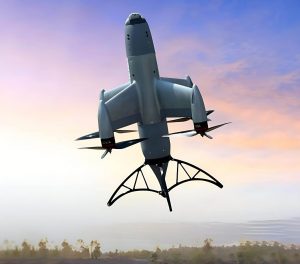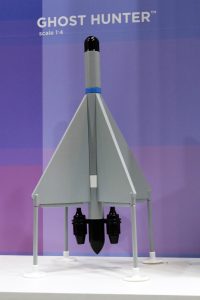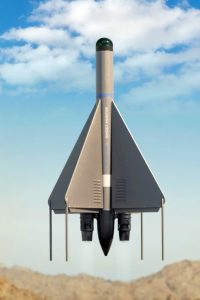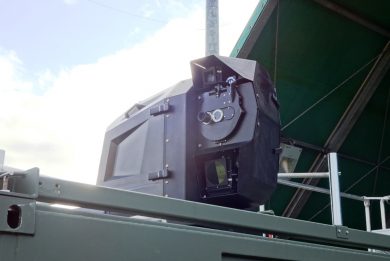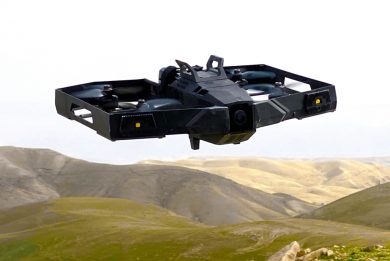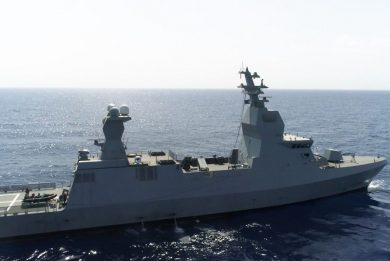DSEI 2025 – Rafael unveils its Hunter Eagle and Ghost Hunter C-UAS drone killers
At the London exhibition Rafael exhibited the models of two drone killers, the Hunter Eagle and the Ghost Hunter, developed to integrate the company C-UAS soft kill capabilities
Detecting, classifying and mitigate, these are the three key steps considered by Rafael in its C-UAS systems. The Israeli company developed the Drone Dome, which integrates a radar, SIGINT radiofrequency sensor, electro-optic Speed ER sensor, jammer, and C4I Center. It can detect drones up to 3.5 km in all weather conditions on 360°. However soft-kill is considered insufficient at this stage, with the proliferation of drones of various types, therefore kinetic effectors were added, in the form of the Samson remotely controlled weapon station and the 10 kW Lite Beam high energy laser system.
At DSEI 2025 two more effectors were added to the Drone Dome hard-kill capability, the Hunter Eagle and the Ghost Hunter; these were part of the company display at last June Paris Air Show, but remained under veil due to the action taken towards Israeli companies. Both systems are in the development phase, therefore the company did not provided precise data, EDR On-Line understanding that artificial intelligence algorithms are present in both drones. While their architecture is defined, many details might still change during the final development iterations.
The first one, which model seen at DSEI was at the 1:1 scale, is the Hunter Eagle, a hit-to-kill drone which estimated height is around 0.4-0.5 metres, its mass being between 5 and 10 kg. No speed, range and endurance data were provided. The airframe is made of a central cylindrical fuselage hosting the electro-optical seeker at the front, and fitted with cruciform wings each carrying at its extremity a pod containing an electric motor that activates a three-blade propeller/rotor.
A VTOL system, the Hunter Eagle takes off vertically, a four legged support ensuring stability from the ground. The drone is directed towards the target, the seeker being activated when it gets close to it the Hunter Eagle flying independently in the last phase of the attack. Should it miss the target or should the mission be aborted, the drone can come back to the take-off point, the system being inherently safe as it does not contain any explosive. This also makes it suitable for operating in urban areas or high-risk environments without any risk of generating collateral damages. The Hunter Eagle can operate as a single effector or can be launched in swarm, to ensure the incoming threat neutralisation or to come with multiple threats. According to information gathered at DSEI the Hunter Eagle will be demonstrated in late 2025 and will be ready for delivery within 2026.
The Ghost Hunter is a jet-powered drone much bigger than the propeller-driven solution, as the model seen at DSEI was at the 1:4 scale. This means that its height should be between 1.4 and 1.6 metres, while its take-off mass should be around 50-60 kg. EDR On-Line understood that the architecture is far from being frozen; the Ghost Hunter model showed a cylindrical fuselage with four delta wings in a cruciform layout, with a radome at the front hiding the radiofrequency seeker. Four spikes at the rear of each wing allow to keep the drone on the ground, as in the rear part of the fuselage we find the propulsion system, currently based on two small turbojets, which gives the drone a maximum speed twice that of the Hunter Eagle. Here too no indication on speed, range and endurance were provided.
The Hunter Eagle carries an explosive warhead; here too no details were provided, but it is quite probable a high explosive fragmentation warhead, fitted with a proximity fuse that does not require the drone to have a direct hit with the incoming threat. EDR On-Line understood that should the mission be called off, the Hunter Eagle can come back to base and land vertically, which means that the safe and arm device can be controlled from the ground, the data link also allowing to re-engage the drone against a different threat. The Ghost Hunter development is one year behind that of the Hunter Eagle, therefore first demonstration is scheduled for late 2026, the system being available on the market within 2027.
Rafael is obviously looking at the export market, the drone bodies being designed to facilitate production in customers’ countries.
Images courtesy Rafael, photos by P. Valpolini

